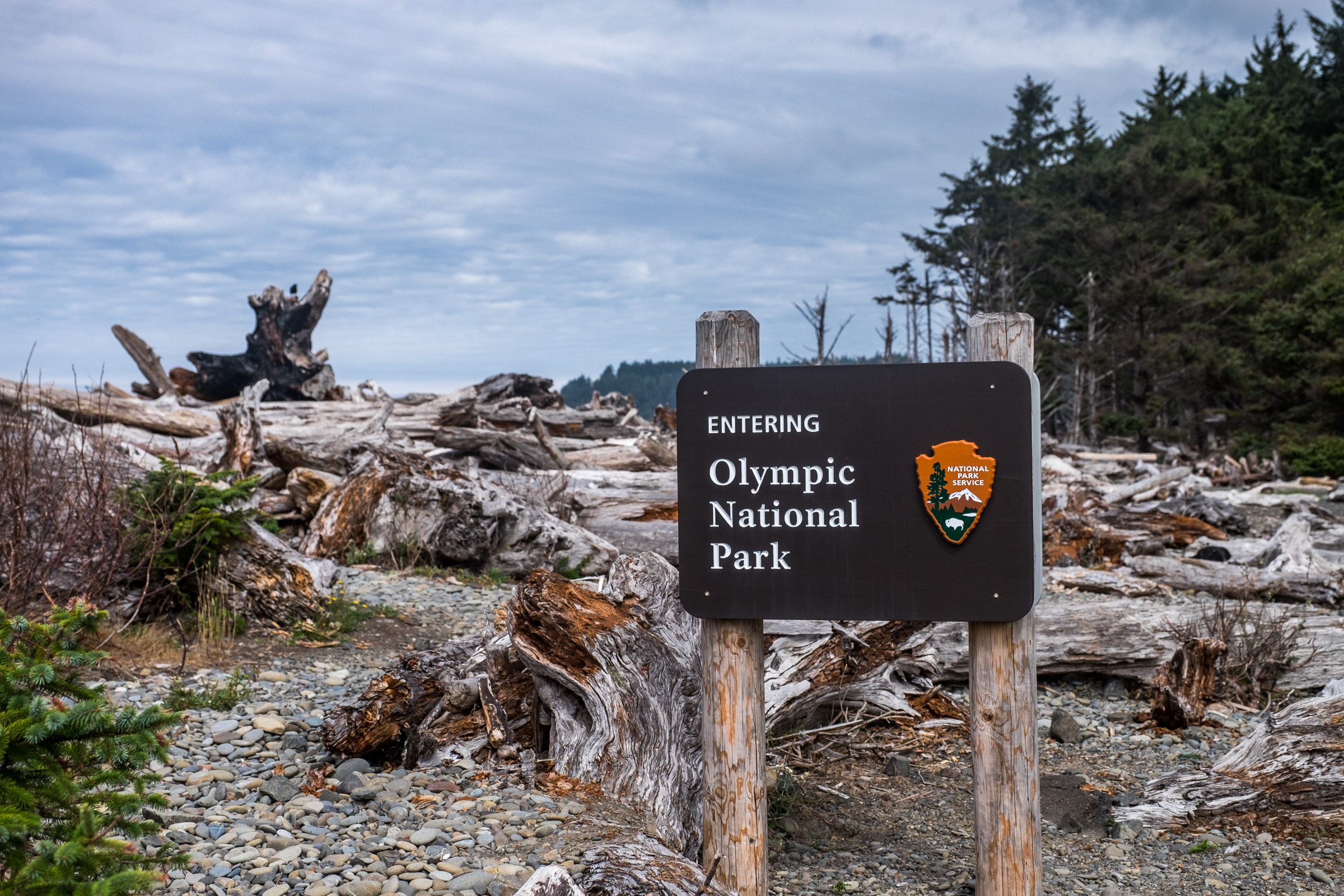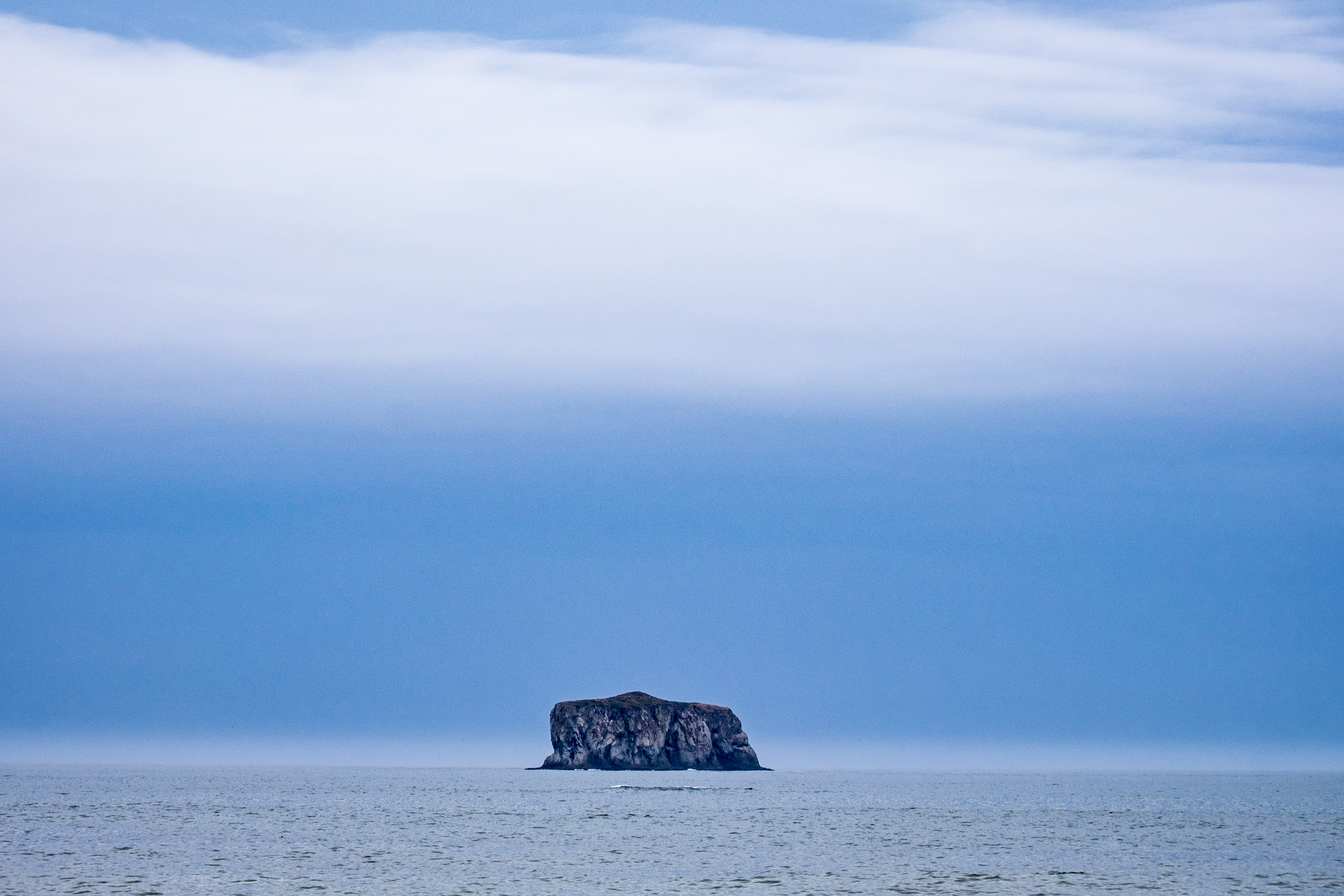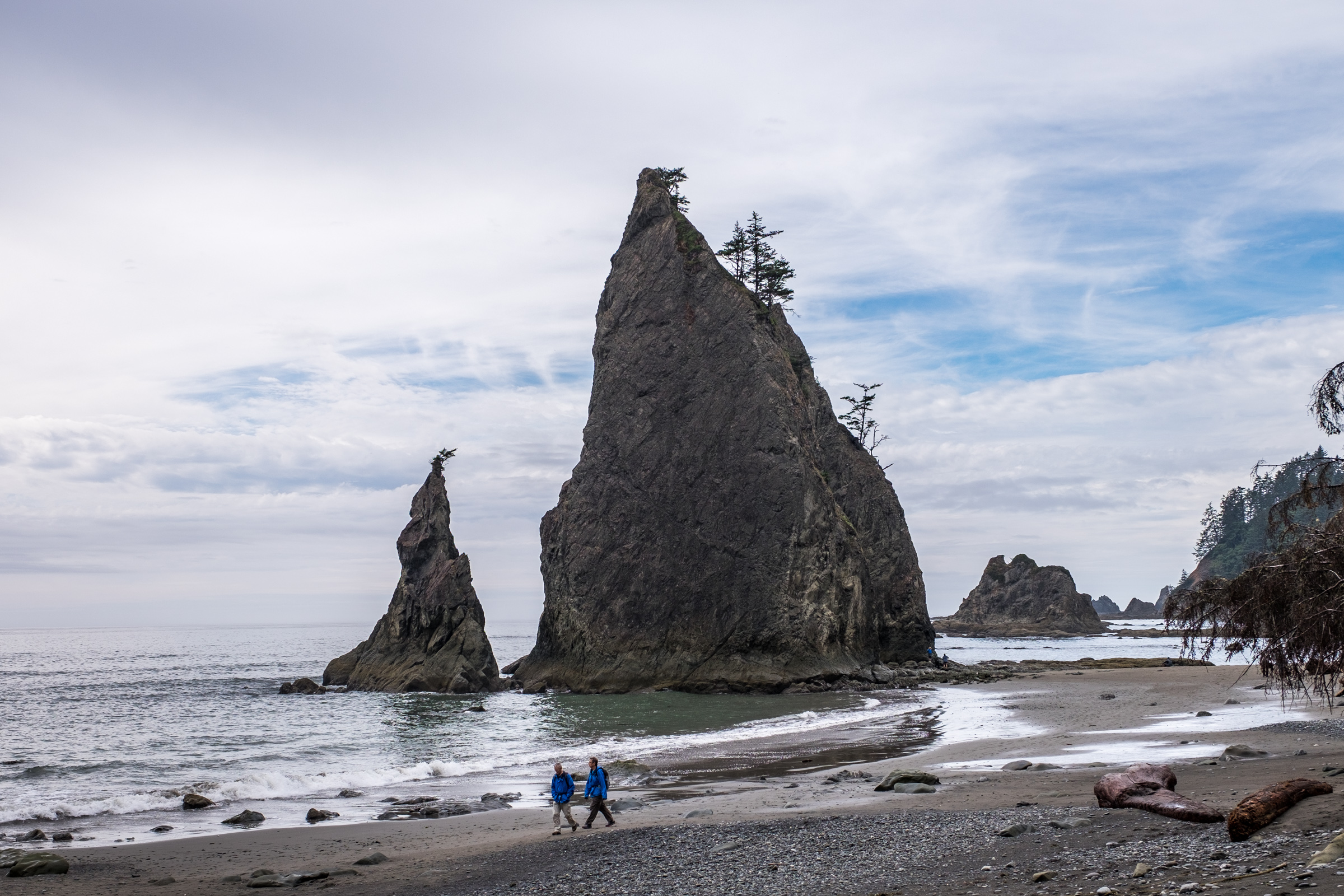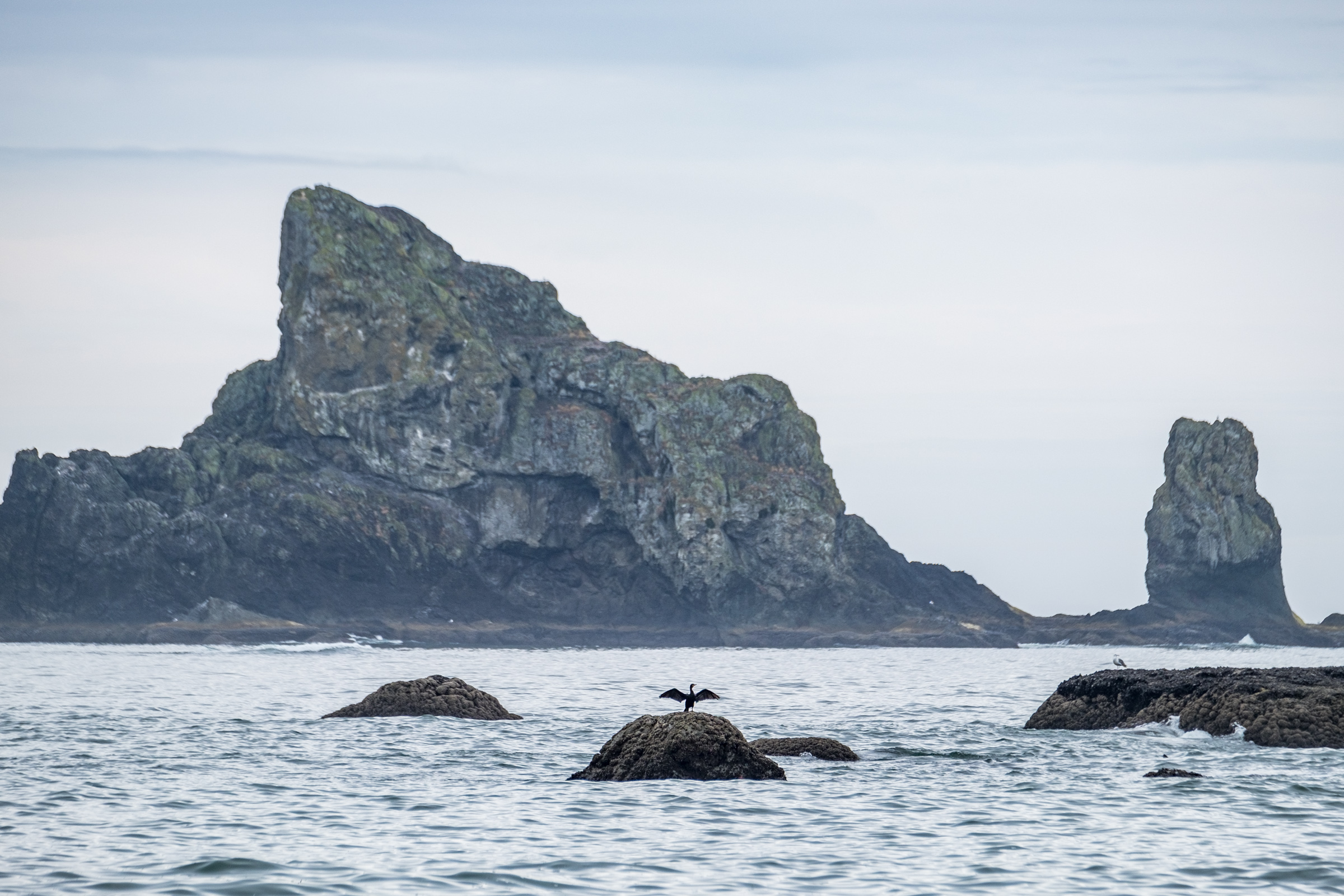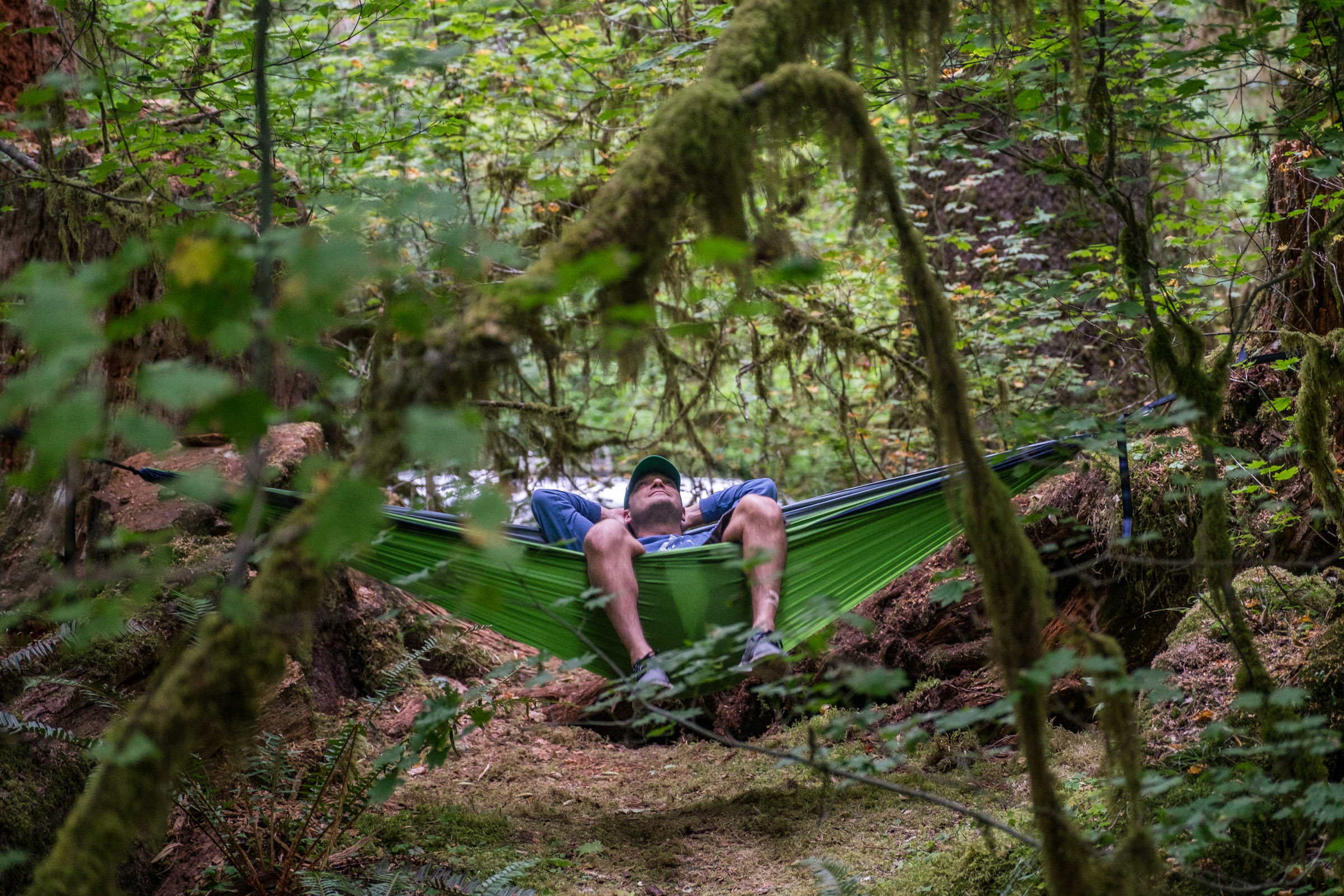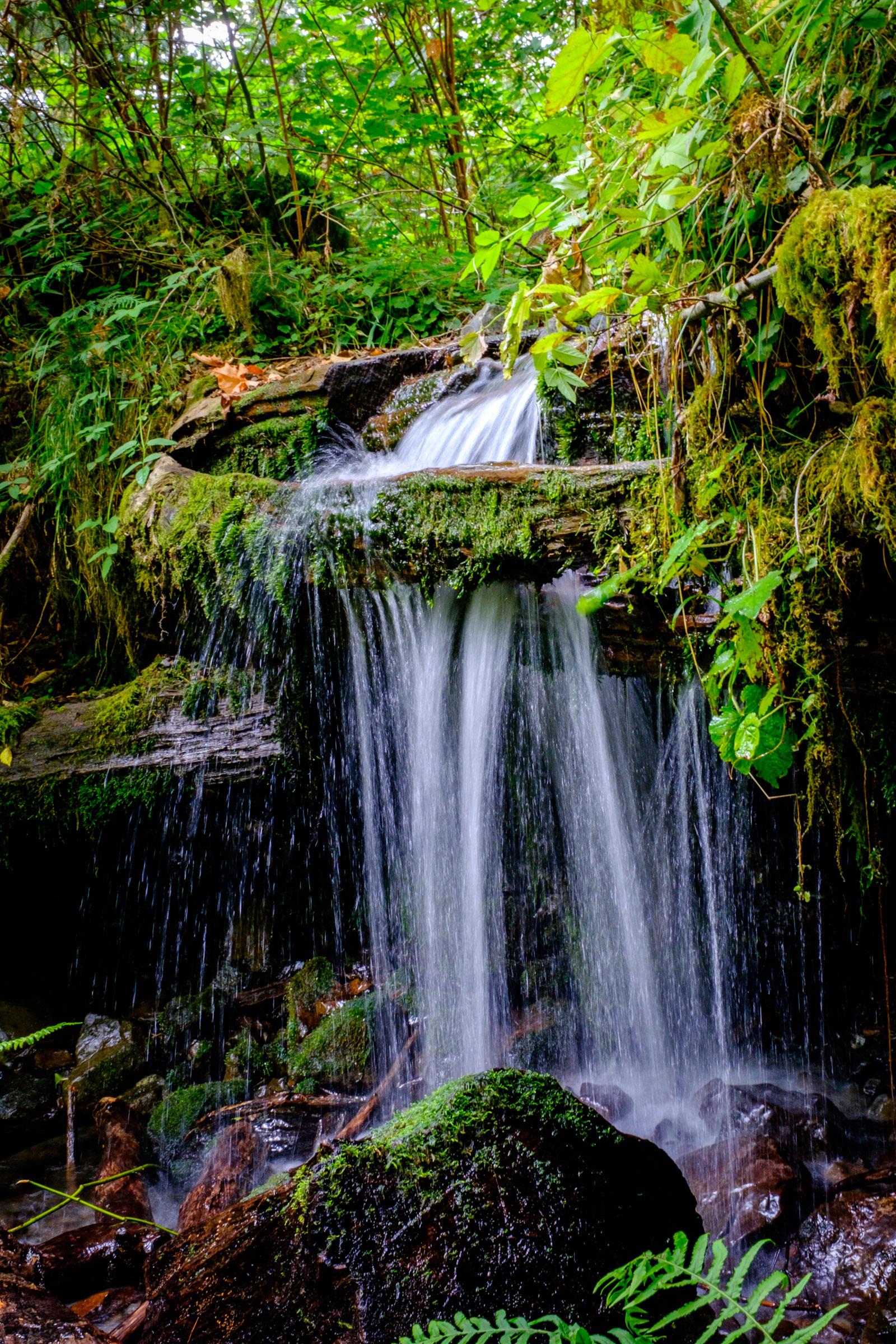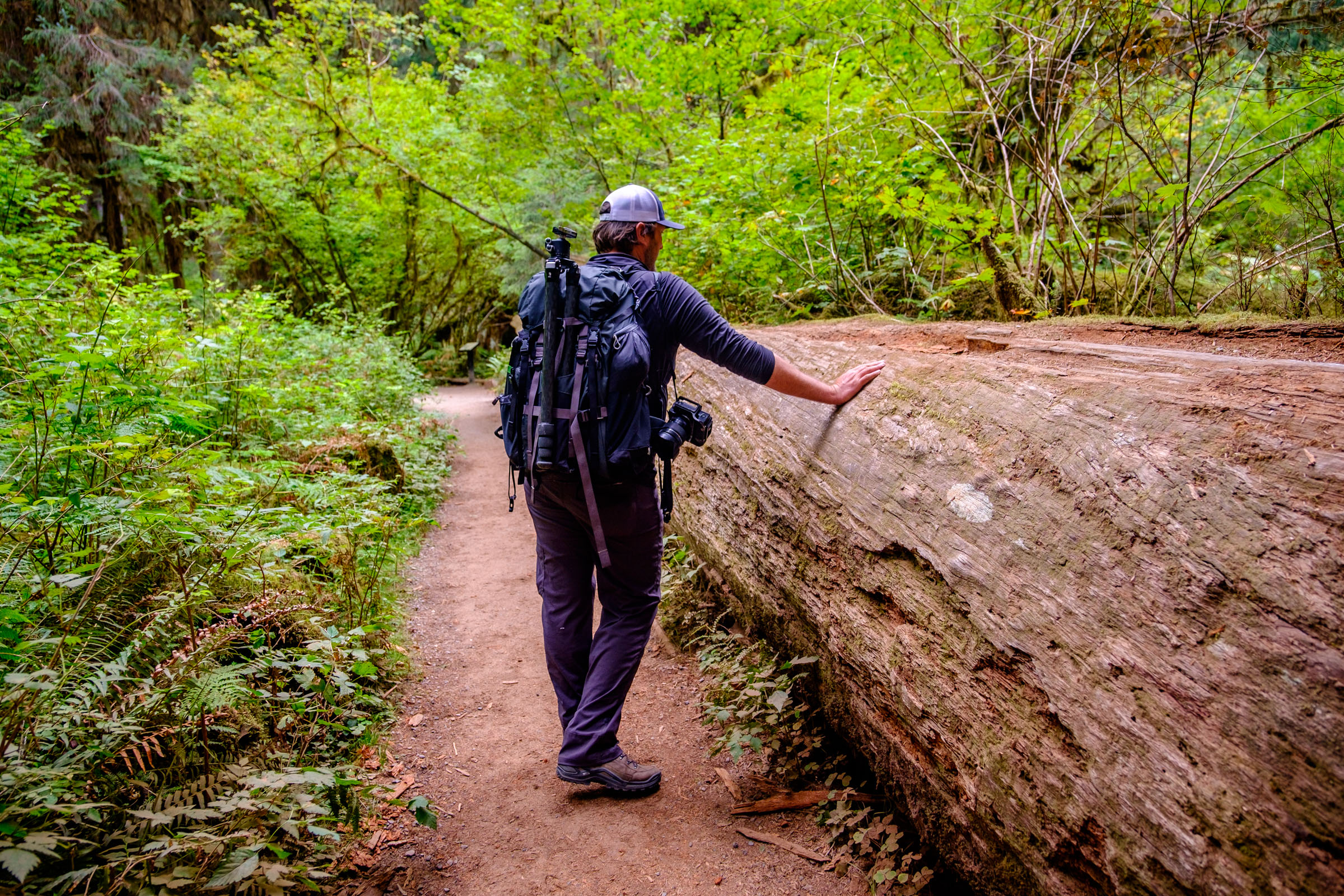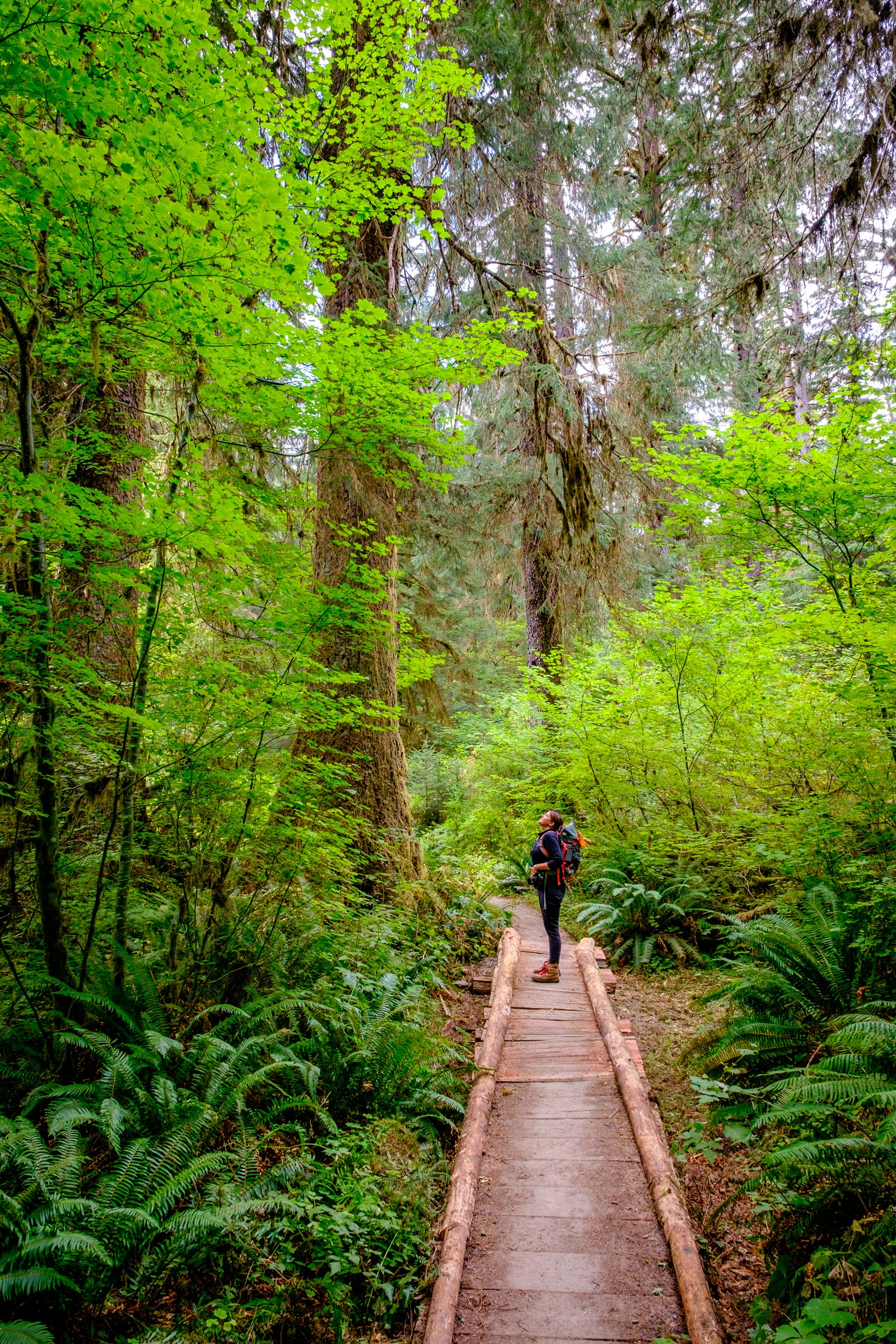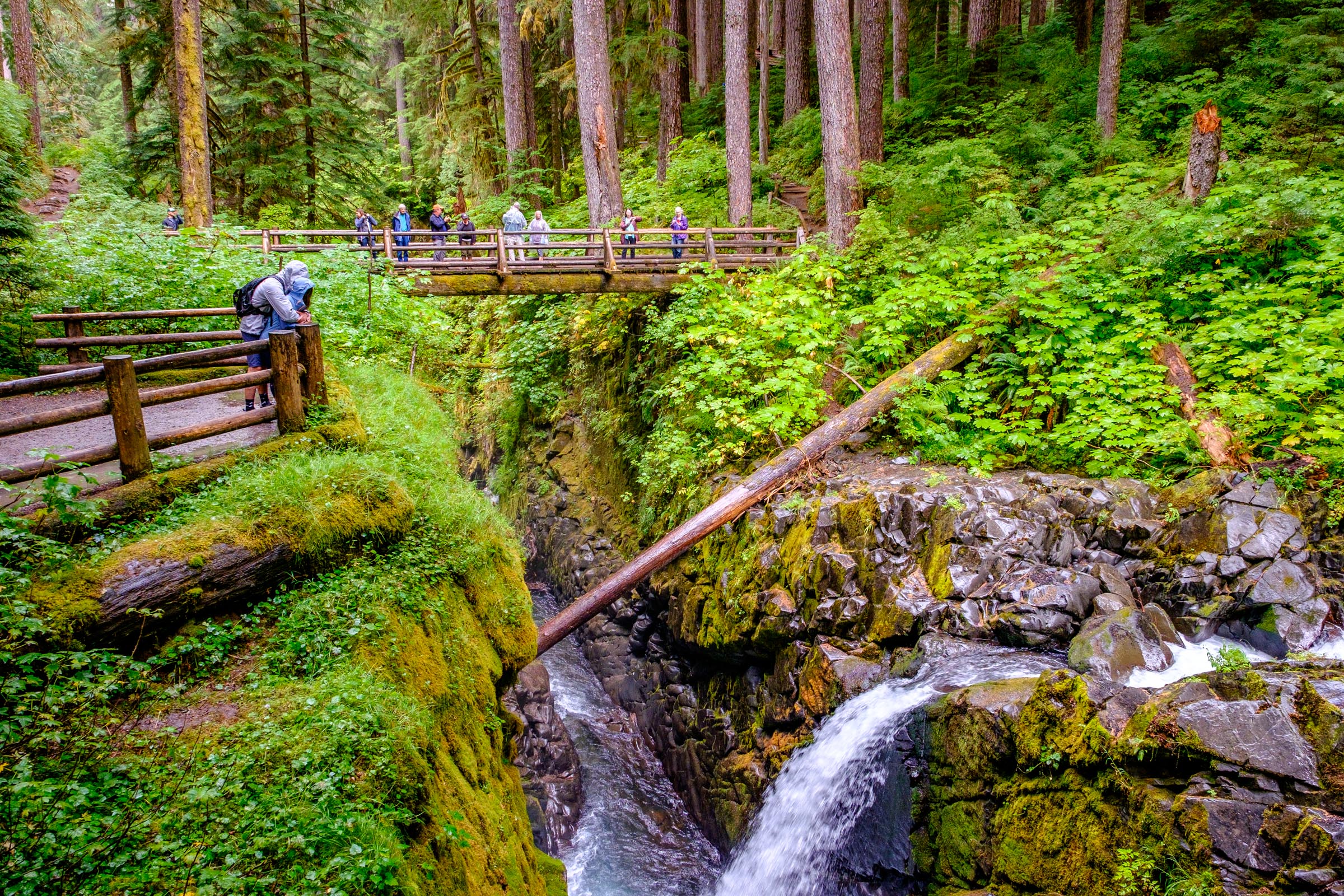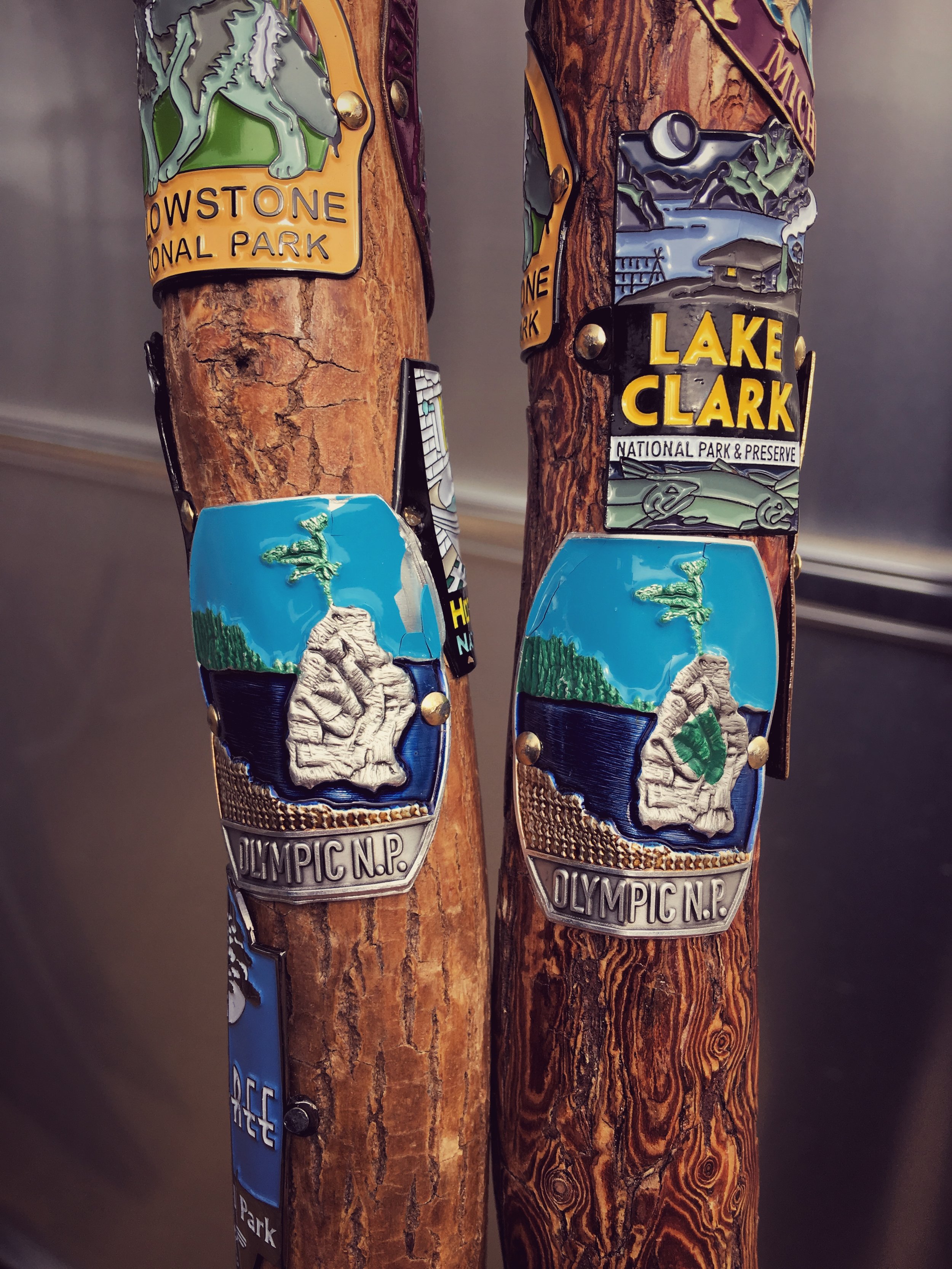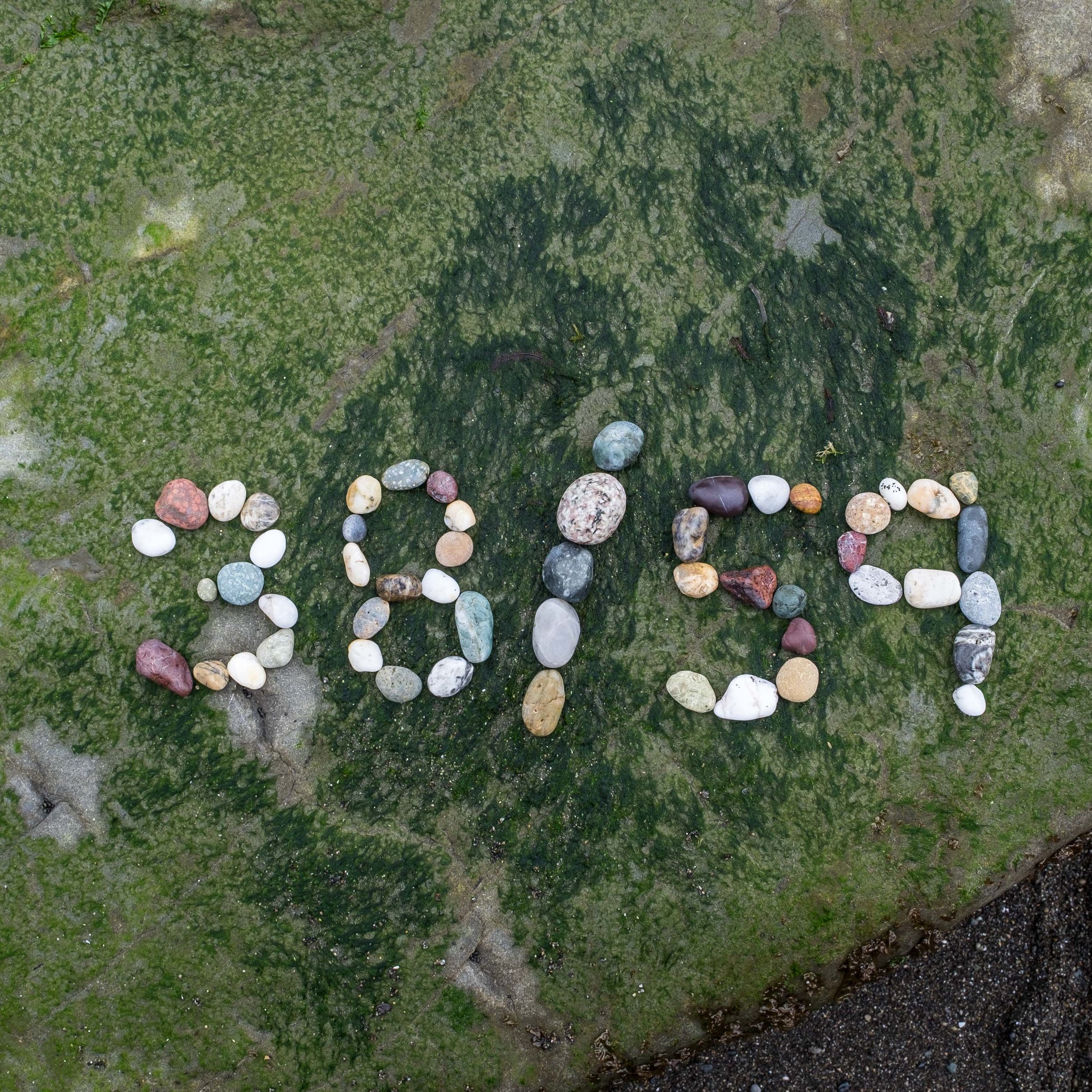Olympic National Park, Washington, USA | Park 38/59
Olympic National Park Three Ways
Our good pal Jen hops on a massive piece of driftwood to have a better look at the amazing Pacific Ocean at Rialto Beach.
After 8 weeks in Alaska, we were thrilled to return with Wally the Airstream to the lower 48 where roads are more accessible! Happily making way through the rainforest in Olympic National Park in Washington.
Glacier capped mountains, alpine meadows, spectacular Pacific coast, primeval forests, fish and wildlife, sparkling streams and lakes, Indian and pioneer history, biological diversity, exceptionally clean air, wilderness solitude… that is the description that the National Park Service assigns this park. Any of these standalone attributes is rich on its own merit—and at Olympic National Park in Washington state, you can experience them all in one day.
It is one of the few national parks, if not the only park, that contains within its boundaries alpine mountains, temperate old-growth rainforests, and oceanic coastline. The mountains of the Olympic Range are dramatic with their jagged, glacier-capped peaks that are continuously carved away by high-elevation winds. The forests are blanketed in technicolor green, enfolding you in a nucleus of living biology in what is arguably the greenest, lushest, and most diverse rainforest in all of North America. The Pacific Ocean rages wild, forming sea-stacks, living tide pools, and perfectly smoothed stones shaped by the world's largest ocean, laying ground for endless mounds of driftwood to sit on, to play on, and to throw on top of your by-the-sea campfire. These are not just words—there is a profound natural beauty in the great Pacific Northwest, and one of the finest samplings can be found in the Olympics.
While there are 168 miles of paved roads in the park, none of them travel deep into its interior. More than a dozen spur roads, along with 611 miles of hiking trails make it easier to access, however with such a wide variety of environments to play in it can be tough to know how to plan an adventure there. This article is designed to focus in on favorite areas in the mountains, the rainforests, and by the sea.
On the trail into the wilds of the Hoh Rainforest in Olympic National Park.
A day at play at Rialto Beach on the Pacific Coast in Olympic National Park!
Weather eclipsed our photography at Hurricane Ridge this year so unfortunately, we have no photos of our own to illustrate the beautiful mountain-scape—so we share this instead, a wonderful shot of the Hurricane Ridge Visitor Center captured by the National Park Service.
The Mountains
Washington state is a playground for mountain-lovers because of its glaciated peaks, rugged terrain, and alpine wilderness found in both the Olympic and North Cascade Ranges. The heart of the Olympic Mountain Range belongs to Mt. Olympus (7,980-feet) and Hurricane Ridge (5,242 feet), the latter being the most popular area to explore in the mountainous section because of its improbable accessibility. Within its confines live sub-alpine forests, shimmering alpine lakes, and meadows known for outstanding bursts of wildflowers that color the landscape during the spring and summer months. Arguably more impressive is Hurricane Hill, an exposed mountaintop overlooking the world with views of the Pacific Coast 33 miles westward. Off-road vehicles that are equipped to crawl the alpine terrain can head out for exploration of the narrow dirt roads of Obstruction Point and/or Deer Park where wildlife sighting are common. The Hurricane Ridge Visitor Center also offers tremendous views and is available to anyone with a car and a map who wishes to go there. During ski season, the area transforms into a winter wonderland where freshly laid powder invites snowshoers, alpine and cross-country skiers, boarders, and kids of all ages keen to fly down the hill on a sled or intertube.
High on life on the Hoh Rainforest. Our good pal Mike stands in awe of the ancient old-growth trees.
The Rainforest
Do you believe in magic? How about magical places? The Hoh Rainforest is proof that they exist. Under the canopy, the health of the ancient rainforest is evident—every square inch of land beneath your feet and all of the area surrounding you is drenched with vegetation, tree bark, leaves, and foliage. National Geographic Travel notes that moss-covered Sitka Spruce and Western Hemlock trees reach heights of up to 300 feet. It is otherworldly. Supernatural. One of our dear friends described it as "absolute chaos"—and it is in the very best way. It's a little bit like a Monet painting—picturesque from even the smallest distance but incredibly detailed when you have a closer look.
The best way to explore Hoh is to set out on the Hoh River Trail meandering through an enchanting world of old-growth trees and its colorful backdrop on a flat and easy trail. If you follow the trail to Five-Mile Island and back to the Visitor Center from where you started you will have wandered 10 miles through spruce, cedar, fir, and other coniferous trees that helped to earn Washington the name “The Evergreen State.” The best part about this trail is that it is relatively non-committal—you can easily turn back any time you please and you never feel as though you are missing “major viewpoints” because the major viewpoints are all around you, the entire way.
High on life on Rialto Beach. Our good pal Mike hams it up with sea-stacks in the background.
The Coast
Stretching 73 miles aside the Pacific Ocean in Olympic National Park is a coastline that provides some of the best beach camping, beachcombing, tide-pooling, and general discovery that there is anywhere in the nation. Look left and you’ll see the ocean; look to the right, the forest. And straight ahead is just beach and all that comes with it—stones smoothed by the ocean, stretches of sand, giant mounds of driftwood, towering rock formations on land and sea-stacks off shore, and birds soaring above the roaring icy-blue Pacific Ocean. One of the most popular areas is Mora’s Hole-in-the-Wall for its amazing geology, tide-pools, and forest trails that wind aside the beachfront—a fine place to pitch a tent! We've camped at both Third Beach and Second Beach in the past, and they are remarkable as well. With such a long stretch of national park-protected shore, variety is on your side—no two beaches are the same and they all welcome different experiences to be had in each of them.
Quotable Images
Fact Box
922,651 acres | International Biosphere Reserve | UNESCO World Heritage Site
Official name: Olympic National Park
Date established: June 29, 1938
You can get to Olympic National Park without taking a ferry, but don't miss this classic Seattle experince! Just head to Pier 56 and cross the Puget Sound to where you can start a gorgeous drive along the Olympic Peninsula to the park.
Location: Western Washington, on the Olympic Peninsula
How to get there: From Seattle, take a ferry to the Olympic Peninsula and drive to Port Angeles and around to Washington’s Pacific coast.
How the park got its name: The park was named after Mount Olympus, standing at 7,980-feet high, the Olympic Mountain Range where it resides, and the Olympic Peninsula which governs the coastline and temperate rainforests in what makes up the national park.
Iconic site in the park: 17 miles south of Port Angeles is Hurricane Ridge, an accessible area in the Olympic Mountain Range that brings visitors face-to-face with dramatic peaks, alpine forests, and sprawling meadows with beautiful displays of wildflowers each spring and summer. During the winter, the heavy snowpack invites skiers and snowboarders to the full-service lift area—one of few that exists in an American national park. Hurricane Ridge Road is open year-round and provides easy access to viewpoints overlooking the gorgeous mountains and to trailheads where you can get off on foot for hikes in the area.
Tidepooling at Mora's Hole in Olympic National Park in Washington State.
Accessible adventure: "Tide-pooling" is a super-fun, family-favorite activity allowing visitors to explore the intertidal marine life that resides along the Olympic Coast National Marine Sanctuary located on the Pacific Ocean. When the tide rolls out each day, mysterious creatures of the sea are revealed on the ocean floor—anemones, crabs, sea stars, mussels clinging to rocks covered with moss and algae—its a look inside of the ocean while never getting wet!
There are popular beaches at Kalaloch Beach, Second Beach, Third Beach, and Ruby Beach. The most popular of all locations is Mora's and its famous Hole-in-the-Wall rock formation that stands on the beach serving as your gateway to the tide-pools. Very important: Mind the tides so you don't find yourself stranded.
“We owe it to future generations to keep alive the noble and beautiful creatures, which by their presence add such distinctive character to the American wilderness.”
Tidepooling etiquette and basics:
Help the marine life environment! Bring a trash bag with you and remove any garbage and other foreign objects whenever possible.
Algae covering rocks makes them slippery. Walk deliberately and find footholes. Never walk on wildlife.
If you pick up a rock, place it back down the way it was, leaving wildlife and organisms to return to the environment where they were before you disturbed them.
Part of the fun of tide-pooling is that in some cases you can touch marine wildlife (such as sea stars); however never forcefully remove them from a surface or handle then excessively.
Refrain from building driftwood fires within close proximity of tide-pools as the soot can remain in the sand causing damage to the wildlife and their environment.
Never ever "collect" marine animals.
Sitting by the fire at our primitive campsite at Rialto Beach with our good friends from DC, The Mooks!
Big adventure: Grab some friends and your camping gear and head out to the Olympic Peninsula for classic Washington state beach camping! After a short 1.5-mile walk over a sea of smooth stones from the Rialto Beach parking lot you can pitch a tent right on the shore in primitive campgrounds. Fire rings are all set and gathering of wood is allowed in the heavily wooded areas, so once you arrive and set up camp you can wander off into the forest or farther down the coast to go exploring. Bring layers and rain gear, even in peak season it can be wet on the beach—and exploration PacNW-style is a rain-or-shine event!
Did you know...
95 percent of Olympic National Park is designated wilderness.
It is the 6th most frequently visited national park in the system.
According to the National Park Service, there are currently 139 full-time park rangers and 117 seasonal workers, totaling 256. Rangers are made up of naturalists, biologists, geologists, scientists, historians, archaeologists, law enforcement, educators, and administrators and are in place for safety, interpretation, education, and preservation.
The diverse ecosystem of Olympic National Park makes a great home for a variety of wildlife, some including: Roosevelt elk (also found in Redwood National Park in California and native to the Pacific coast); cougars (also known as puma and mountain lion); black bears, black-tailed deer, fox, coyotes, skunks, lynx, marmots, and mountain goats. On the coastlines, whales, dolphins, sea lions, seals, otters and other aquatic mammals thrive in the icy Pacific seas; in the lakes and streams, live 37 native fish species. For the bird ninjas: be on the lookout for 600 species of birds in the park! There are 20 reptile and amphibian species and zero venomous snakes.
There are 8 Native American tribes in the region, including the Hoh, Jamestown S’Klallam, Elwha Klallam, Makah, Port Gamble S’Klallam, Quileute, Quinault, and Skokomish. In the mid 1800s, each tribe signed a collective treaty with the federal government, trading land usage rights for assurance that native cultural and traditional practices could continue without interruption.
The deepest lake in Olympic National Park is Lake Crescent with a depth of 660 feet—although some believe that there are depths that have never been found.
Mount Olympus is the highest peak in the Olympic Mountain Range, standing at 7,980 feet. This is considered rather low in the Pacific Coast Ranges. You cannot see Mount Olympus from any city.
Hurricane Ridge is named for intense wind gusts that have clocked up to 70 mph. Its high elevation makes its weather systems somewhat unpredictable. We recommend checking out the Hurricane Ridge webcam for conditions before heading out.
All set up to camp in the Hoh Rainforest — an enchanting place to hang your rain hat.
Olympic National Park has awesome camping! You can pitch a tent on the beach, in the mountains, and in the rainforest—all in one park!
There are petroglyphs located at “Wedding Rocks” on the Ozette Triangle Trail where carvings of whales, hunters, the sea, and other symbols that were important to the native Makah tribe can be seen.
No human has ever been killed by a bear in the park, but fatalities have occurred at the horns of a mountain goat.
In 1909, President Theodore Roosevelt established Mount Olympus National Monument; in 1938, his fifth cousin, President Franklin Roosevelt established it as a national park.
Olympic National Park was almost named ‘Elk National Park.’ Roosevelt elk that are native to the area where the park now resides were all but wiped out by hunting during the late 1800s resulting in the establishment of Mount Olympus National Monument to put a stop to their impending extinction. The animals were named after President Theodore Roosevelt, who is known as "the conservationist president."
Jonathan knee-deep in the Hoh Rainforest with his Fujifilm XT-1.
Logging in Washington State has been a huge industry since settlers reached the area in the late 19th century. In the 1920s, public opinion weighed in that wilderness areas should be preserved for the recreation and enjoyment of the people. As such, political battles have been ongoing for more than a century regarding the harvesting of wood in western Washington. Logging still occurs on the Olympic Peninsula, but not inside the national park.
Mount Olympus, the highest peak in the park, has the highest concentration of glaciation of any non-volcanic peak in the contiguous United States outside of the North Cascade Range.
Scenes from the awesome film Star Wars: Episode IV – Return of the Jedi were shot in the Hoh Rainforest.
Speaking of pop-culture... one for Twilight fans! Scenes from the very popular movie were filmed on the Quileute reservation, in La Push, and in the nearby town of Forks; and also in the Hoh Rainforest. Bella’s house (a private residence) and the Cullen House (a Bed & Breakfast) are both located in the town of Forks. #teamedward
Water, water everywhere! The hallmark of the Pacific Northwest.
Forks! Where the vampires live. :)
In Olympic National Park, there are more than 3,000 miles of rivers and streams, 60 named glaciers, and 72 miles of Pacific coastline.
As you may have heard, Washington is known for its wet climate. In Seattle, it rains about 36 inches per year. In the Hoh Rainforest it rains as much as 14 feet per year. Don't forget your rain gear!
“National parks are the best idea we ever had. Absolutely American, absolutely democratic, they reflect us at our best rather than our worst.
”




